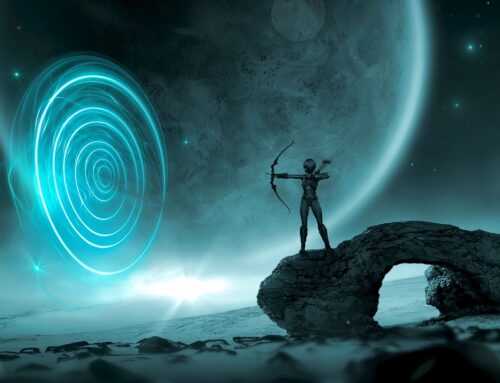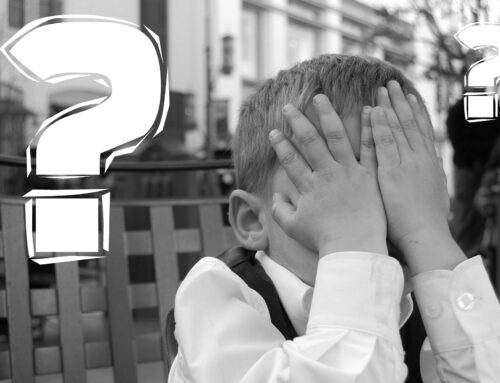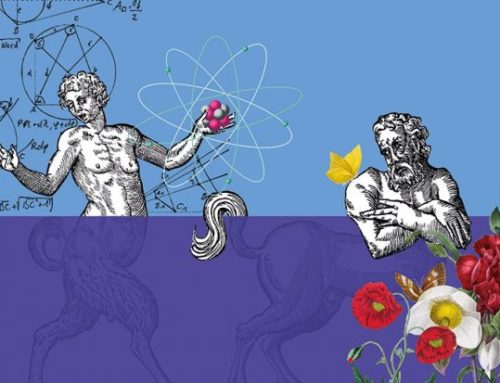Cracks have begun to show in one of quantum’s biggest controversies. The well-known Schrödinger’s cat thought experiment, which sought to illustrate the absurdity of applying quantum theory to the macro-physical world ruled by classical physics has been challenged by a recent advancement in quantum physics. An international team, led by Markus Arndt of the University of Vienna, successfully placed a large molecule of 2,000 atoms—the biggest object yet—into a state of quantum superposition. The advancement shows that quantum effects can be translated into the classical world, establishing the foundations for scientists to continue to demonstrate how the gap between these seemingly disparate worlds might be reconciled.
Quantum theory tells us that particles in superposition can shift between a wave-like state and a particle-state, meaning they can be in two places at once. Of course, from what is observable in the classical world, this cannot be true. If it were, our understanding of what we understand to be “real” would be challenged, opening the door for a whole host of quantum weirdness that classical theory keeps at bay. Essentially, as Schrödinger tried to prove with his thought experiment, if quantum mechanics is reflected on a macro-physical scale, it signifies that human beings could also exist in two places at once. It does not take long for this information to snowball into theories of time travel and multiple worlds, both of which find basis in quantum theory.
On a fundamental level, the new work published in Nature illustrates that the multi-state paradox of quantum mechanics, known as superposition, functions on a larger scale than previously demonstrated. In theory, we already knew this to be true, but the experiment proves it at the largest scale yet, having only been demonstrated previously using the smallest possible particles; atoms, photons and electrons. The experiment used by Arndt and his team, essentially a souped-up the double slit experiment, has been used regularly since 1801 in quantum mechanical experiments to observe the effects of superposition.
The simple experiment involves particles of light (photons) beamed toward a barrier with two slits in it. On a screen behind the barrier, the effects of quantum superposition are displayed in the form of what is known as an interference pattern. It looks something like this:

This striped pattern that results is interesting, as one might assume that a single beam of photons would produce a representative pattern of a solitary line, indicating their fall along a single path. However, the striped pattern that is produced shows that all of the photon’s possible paths are taken and eventually interfere with each other, suggesting the particle in fact also acts as a wave. This describes the probabilistic nature of quantum phenomena, challenging Einstein’s famous claim that “God does not play dice with the universe”.
In order to pull their super-sized version of this experiment off, the international team had to create not only the perfect environment but also synthesized the massive molecule itself in order to ensure it met the requirements for complex quantum activity to occur. The team built a custom interferometer—which, as the name suggests, is a tool that works by merging two or more sources of light in order to create an interference pattern—called the Long-Baseline Universal Matter-Wave Interferometer (LUMI). The team’s LUMI also beats a record: it is the longest interferometer ever built, with a baseline length of 2 metres. Use of this specialised machine permitted the researchers to fire the beam of heavy molecules (some more than 25,000 times the mass of a hydrogen atom) at the multiple-slit apparatus and observe the resulting interference pattern, confirming the molecule’s state of superposition.
With records being broken in the quantum space with what feels like near-weekly regularity, this advancement especially marks a unique turning point in the disagreement between quantum mechanics and general relativity. These two frameworks we use to understand the world around us have come as close to being bridged as ever before. While the success of this experiment does serve to wedge the door open for a number of seemingly bizarre theories like time travel and multiple worlds, it is doubtful that human beings or planets will be time traveling through multiple realities any time soon, if ever. However, this new, scalable research pushes the limit that scientists seek in quantum interactions of superposition further along, enabling and encouraging future research to continue to explore these limits.







October 28, 2020
SUBJECT: I MUST SEND THIS MISSING UNIVERSE SPACE KNOWLEDGE
Creators Score: Reality 1∞, Theory 0, My Mind 1∞, Pottyhead mind 0
SORRY **** BUT I UNDERSTAND, PURE ENERGY, THE QUANTUM LEVEL INCLUDING DNA. Evidently, I am the only one on this planet that understands. All of you Pottyheads 0, all theory. The reason I am sending it to you is that you are the only one that I have been able to talk to one time and the emissivity of the Electron is a perfect 1. I would have liked the University of Wisconsin to be the source of this invaluable understanding. I have published two paperback books with this data. My son, a PhD agrees with me that this reality quantum level just is not understood.
REALITY
PURE ENERGY AND APPLIED ENERGY
The Universe Space sphere and everything in it is composed of Pure Energy. The sphere has internal energy to hold its spherical shape. Pure Energy must be linked to mass to produce applied energy: Thermal energy, Kinetic energy, Mind energy. Memory energy. Communication energy, etc.
First it must be understood that Universe space Pure Energy is the “Creator, aka God” is the Pure Energy, Soul, Personality, consciousness, mind, memory. “He” has used his being as a pattern for creating you, me and everything in the universe including our physical bodies.
MASS
The creator had to create mass to link to the applied energy. The only thing available was pure energy. Pure energy was physically modified into what I will call Masen (Mass, Energy) spherical particles for the quantum level of the Universe
QUANTUM LEVEL OF UNIVERSE SPACE
The Masen particles were produced in countless quantities. Their initial property was internal and external mass attraction. Internal mass attraction holds them together in solid spheres. The external mass attraction filled universe space holding the particles at exact spacing. The Masen particles are identical in every way. If they were not Universe Space would not work.
DNA ASSEMBLIES
The Masen particles used in the DNA, RNA is different than the ones used in constructing the electrons, protons, and neutrons. They are used as contacting Masen that form the DNA strips. It appears that every living organism, human in this case, has millions of DNA modules in liquid throughout its body. Following the Creators amazing abilities
The DNA, concentrating on human is probably composed of three level interconnected Masen balls connected, held together individual Masen particle strips. The center a common denominator with the basic human properties and upon conception of the sperm and egg the individual infant and the mixed parents’ properties are downloaded to the other two strips and the egg begins the birth, creation process. Unfortunately, we will never understand the process because it is in the quantum, bottom layer of Universe Space
The plans and production has to be so perfect in every respect.
QUANTUM PARTICLES
The key to understanding the quantum particles was realizing that they had to be identical spherical, interchangeable Masen particles The electron particles were identical to the proton and neutron. The mass of the spheres in the electron is 1.24174532e-21 in3. It was found that the exponential size of the first sphere is E-30 in3. That volume proved to be the unknown volume and defined everything at the quantum.
PROOF Fundamental Energy, Mass, Masen (Mass/Energy) particles
Fundamental solid spherical Mass x quantity in Electron = Total Mass of Electron
2.38732415E -30 in3 x 520,141,062 = 1.24174532e-21 in3
I will stop here – I am sick of being humiliated by PhDs that are way below my level. UW has a chance to be at the top of science intellectually. I suggest that if by any means you, us is interested it must be done very carefully – I am obviously anxious to help. In my opinion the high level researchers are too specialized and are in their box. Recommend that each level meet often to explain their projects and learn how to use their valuable Minds!
https://projectqsydney.com/quantum-superposition-bridges-the-classic-world/
REALITY AND SHRODER QUANTUM-SUPERPOSITION
A weak mind is wishful thinking theory. An idea is just a thought, not a miracle or a theory.
The University of Wisconsin-Milwaukee Research Foundation (UWMRF) has about 25 Physics Research PhDs working on their assigned “Specialties”. That pretty much covers everything that we understand and don’t and can’t understand. None of them understands below the surface of the Electron, which I call quantum Masen (Mass/Energy) particles. Schroder’s quantum-superposition-bridging -the-classic-world now comes up without a starting point particle. Remember that Schroder is a PhD that does not understand below the surface of the Electron.
Is my particle, the Masen, mass-energy, the bridge to Reality? I had nothing to do with it but the “Creator” did. He created countless quantities of them with one property, mass attraction, an energy property – and energy mass composition. Face it, the Masen is mass bristling with energy. We do not accept, understand Energy, just applied energy. To you physicists I am just a stupid engineer because nobody has ever contacted me – recontacted in the case of Jake at UW-Madison. Why did I have to go to my son, to learn the biology is where they understand that protein is processed into quantum spherical Mass energy, not just for Pharmacology or Biology or Engineering Physics or physics. We must understand and talk each other and not keep everything separate. I wonder if the 25 researchers at UWMRF talk, interface about their specialties. Everything on Universe Space is connected including us, our souls, minds consciousness, personality, mind and memory. Our temporary bodies have been created to learn. Understand and cope with lifetime challenges and problems positively with our probable infinite minds.
THE ELECTRON AND HYDROGEN
The quantities of the electron and hydrogen are second particles, behind the Masen. The electron is the only active component. Its main function is in the center of a proton. It doesn’t take a dumb engineer to understand that the Creator first plans were to design hydrogen to cool the millions of suns and warm Universe Space. I don’t understand how physics can say that a + and – electric charge is zero on Hydrogen. It is funny but if the charge on my car’s battery is connected a current drain the battery instantly. Idiots, I can’t help it. Hydrogen is a resonant carrier frequency energy storing resonant electron. In the hydrogen clouds in universe space the hydrogen resonates white star light at just above 140 Mhz. Hydrogen in the Sun’s plasma surface absorbs the solar energy frequencies temperatures. When solar energized particles touch the surface they radiate Photon solar energy radially away forming invisible Pure energy contacting columns.
I am going to stop here – I probably, frustratingly will not hear anything back from any mind that is capable of understanding. I have passed it on Maybe eventually someone will understand it.
Jerome Hoelz
6634 Windsor Court
Columbia MD 21044
[email protected]
iPhone 443-878-9314